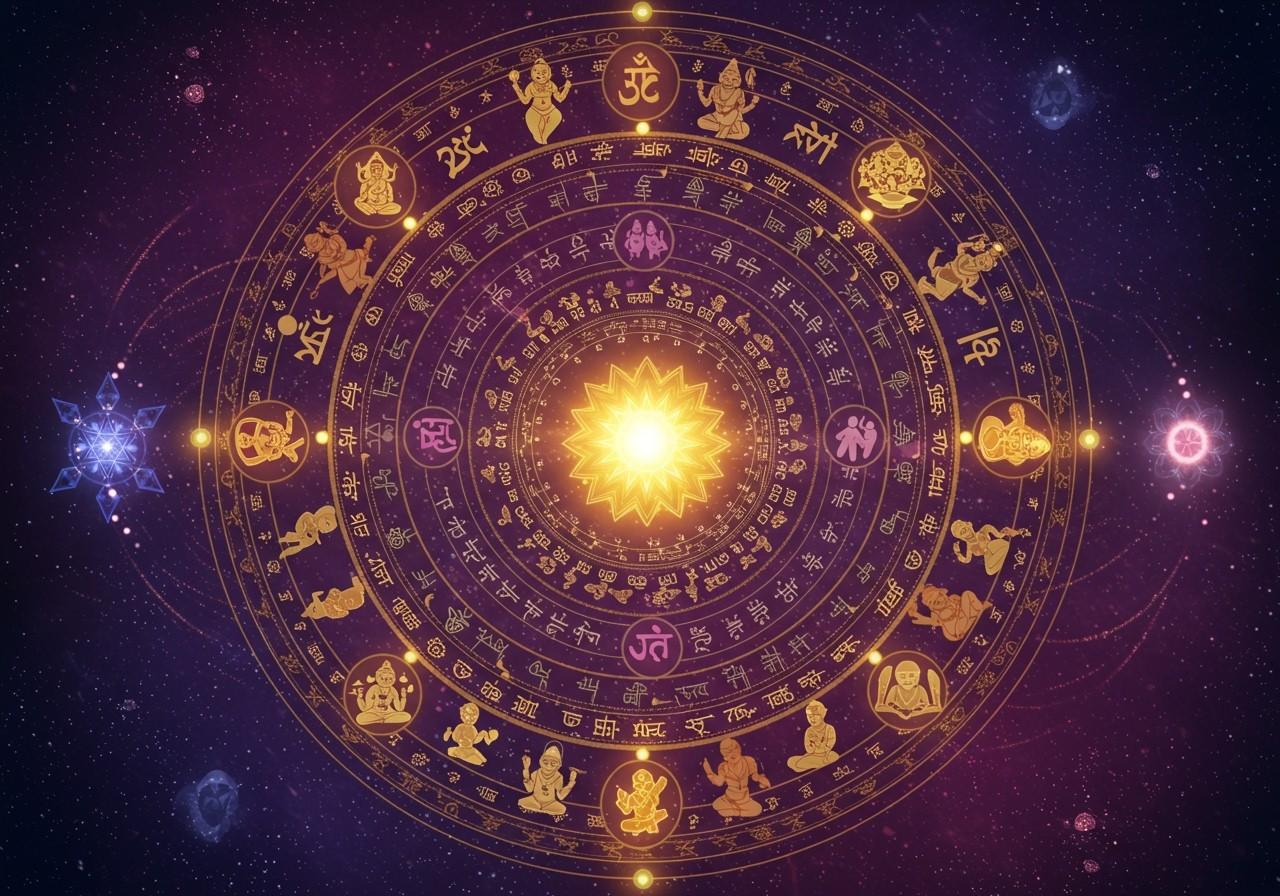
Samsara, a cornerstone of Hindu philosophy, depicts the continuous cycle of birth, death, and rebirth. This profound concept, rooted in ancient Vedic texts, emphasizes the soul’s journey through various lifetimes, shaped by actions and the pursuit of liberation. Understanding Samsara is crucial for appreciating Hindu traditions, rituals, and the overarching spiritual goals of life. This continuous cycle underscores the importance of living a righteous life, as every action has repercussions on future rebirths. Reincarnation, a core belief within Hinduism, also resonates within other spiritual traditions such as Buddhism, Jainism, and Sikhism.
What is Samsara?
Samsara, derived from Sanskrit, signifies “continuous flow.” It describes the soul’s perpetual journey through different existences, driven by karma (actions) and the desire for worldly experiences. The Atman, or individual soul, is bound to this cycle until it achieves liberation (Moksha). This cycle is not seen as a punishment, but rather as an opportunity for growth and evolution towards spiritual enlightenment. The ultimate aim is to break free from this cycle and achieve oneness with the divine.
How Samsara Works in Hinduism
Samsara operates through the principle of Karma, where actions in one life influence the circumstances of future lives. Good deeds create positive karma, leading to favorable rebirths, while negative actions result in suffering. Dharma, or righteous conduct, plays a vital role in shaping karma and consequently, the journey through Samsara. Hindu deities and rituals offer guidance and support on this path. The soul can be reborn in various realms, including human, animal, or divine, depending on the accumulated karma. This understanding of reincarnation profoundly impacts ethical behavior and motivates individuals to live virtuous lives.
Samsara and Karma
Karma, the law of cause and effect, is intricately linked to Samsara. Every action, thought, and intention creates karmic impressions that influence future rebirths. These karmic impressions are not simply a tally of good and bad deeds, but a complex web of cause and effect that shapes the individual’s journey. There are three types of Karma: Sanchita (accumulated karma from past lives), Prarabdha (the karma that is currently unfolding in this life), and Kriyamana (the karma being created through present actions). Understanding and managing karma is essential for progressing towards Moksha. Rituals, practices, and living a life aligned with Dharma can purify karma and lead to more auspicious rebirths.
The Path to Liberation (Moksha)
Moksha, liberation from Samsara, is the ultimate spiritual goal in Hinduism. It represents the soul’s freedom from the cycle of birth and death and its union with the divine. Several paths lead to Moksha, including Bhakti (devotion), Jnana (knowledge), and Karma (selfless action). Each path emphasizes different aspects of spiritual practice, but all aim towards the same goal of liberation. Meditation, self-realization, and surrender to the divine are key practices that facilitate the attainment of Moksha. Sacred scriptures like the Bhagavad Gita and the Upanishads offer profound teachings on this path, and gurus (spiritual guides) provide invaluable support and guidance.
Samsara in Daily Life and Practices
Samsara’s influence permeates daily Hindu life and rituals. Rites of passage, such as birth, marriage, and death ceremonies, are viewed within the context of Samsara. These rituals are not just social customs but also spiritual practices that acknowledge the soul’s journey and its connection to the divine. Festivals and pilgrimages are opportunities to purify karma and advance the soul’s progress. Ethical and moral choices are significantly impacted by the understanding of Samsara, encouraging individuals to act with compassion and integrity. Charitable acts and selfless service (Seva) are seen as ways to mitigate negative karma and contribute to spiritual growth. Samsara shapes the worldview and lifestyle of devout Hindus, reminding them of the eternal nature of the soul and the importance of striving for liberation.
Danteshwari Temple: A Complete Guide to History, Significance, and Visit
Shakti Peethas and Navadurga: Exploring the Divine Feminine’s Power
Karma in Hinduism: The Law of Cause and Effect Explained
Shop Now for Authentic Puja Items


